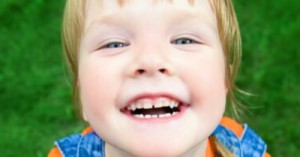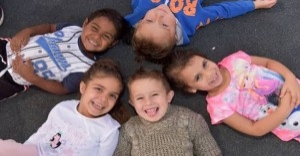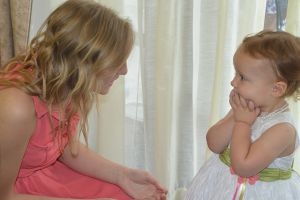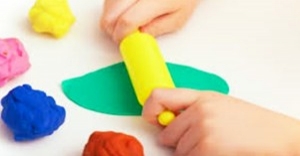Emotional Intelligence is now widely accepted as a fundamental life skill which can be nurtured even in young children. Identifying, labelling and talking about emotions not only helps them regulate their own emotions but also tune in to how people are feeling around them. The following article provide strategies on teaching children about emotions.
- Play games that help them to recognize and identify emotions; start by covering your face with a piece of paper or small blanket and then slowly lower it down to reveal your face showing an emotion. Let your learners guess the emotion you are feeling after which they can have a go at displaying the same emotion with their faces. Once children get the hang of the game to, go for variations like Feelings Charade that they can play on their own. Allow such game to open up conversations on situations that might lead to such and such emotion.
- Make up songs about different emotions; for example follow up, “When you’re happy and you know it…”, with variations like “When you’re worried/sad/curious and you know it…” Sing familiar songs like “Row, row, row your boat…” with various emotional expressions – sad, impatient, angry and so on.
- Once children get a fair idea about the traits associated with various emotions, think of ways to identify such emotions in others. Story reading is a particularly useful way to do this. Use questions like “How does the Big Wolf make the little Pigs feel?” or “Can you make a face that shows what the Wolf felt when the house made of bricks wouldn’t come down?” to help children guess how the characters in the story are feeling.
- A more active way to teach children about understanding emotions would be to use puppets to act out stories. Let them identify emotions the puppets might be feelings at different points in the story and then encourage them to mirror such emotions with their own faces. Such games can also make space for useful discussions on managing unhelpful emotions, like “What do you think Goldilocks should do when feeling afraid? “ Make the process even more interesting by having the puppet model the coping strategy.
- Integrate emotional intelligence in daily learning practices. For example as children come in the morning, have them say how they are feeling and then invite the rest of the class how they might respond to a particular feeling. So if a child says they feel scared, a friend could give a hug or if someone says they feel happy, a mate could give a hi-five. Later in the day, support children in identifying their own emotions states – “it looks you are feeling tired; what can we do to make you feel better?” – before suggesting perhaps a nap.
- Eventually, extend the practice of understanding emotions from the self to others. Encourage your learners to look at each other's faces and think about how they are feeling. “Jamie, look at your friend Alia’s face – does she seem worried that you took away her play dough?” Use the practise to teach children to tune into others’ both positive and negative emotions and explore ways of responding appropriately to people around them.
Further Reading
Teaching Children To Identify Their Anger Signs - Here are a few tips on teaching kids to identify their anger signs so that they know how to manage them better.
Linking Social/Emotional Development To EYLF 0 - 5 Years - The following article how social and emotional development and is linked to the EYLF.
Strategies To Help Angry Children Cool Down - Provides strategies that early educators can use to help angry kids cool down.
Understanding Temperament In Children - The following article provides information on What Is Temperament, Understanding Temperament, Teaching Strategies and more.
The Zones Of Regulations- The following provides information on What Are The Zones Of Regulations, How To USe The Zones Of Regulations and more.







 Open ended questions cannot be responded to with one word answers such as yes or no. These types of questions enables a child to provide
Open ended questions cannot be responded to with one word answers such as yes or no. These types of questions enables a child to provide During your child’s preschool years, an important milestone begins to emerge. This is the development of pre-writing skills. Pre-writing skills are used to encourage, develop
During your child’s preschool years, an important milestone begins to emerge. This is the development of pre-writing skills. Pre-writing skills are used to encourage, develop Open ended materials enables children to play freely. They are objects that have no rules to follow, use or function. Raw materials that can be
Open ended materials enables children to play freely. They are objects that have no rules to follow, use or function. Raw materials that can be An Acknowledgment of the Country is a way of showing respect for the Traditional Owners and can be given by both non-Indigenous people and Aboriginal
An Acknowledgment of the Country is a way of showing respect for the Traditional Owners and can be given by both non-Indigenous people and Aboriginal Language plays an important role in a child’s development. It enables a child to communicate effectively with their family, learn at school, socialize with friends,
Language plays an important role in a child’s development. It enables a child to communicate effectively with their family, learn at school, socialize with friends, Like adults, children have to deal with their own stress in life. Moving house, starting a new school, preparing for a new sibling - these are
Like adults, children have to deal with their own stress in life. Moving house, starting a new school, preparing for a new sibling - these are Playdough is such a versatile material. It provides numerous benefits to children as they manipulate it, it is safe and soothing and provides children with
Playdough is such a versatile material. It provides numerous benefits to children as they manipulate it, it is safe and soothing and provides children with Teaching children about sustainability enables them to appreciate and respect the natural environment. Early childhood services can provide meaningful hand on learning experiences in order
Teaching children about sustainability enables them to appreciate and respect the natural environment. Early childhood services can provide meaningful hand on learning experiences in order Recycling is an important concept that teaches children to care for the environment. It encourages children to be responsible and show a growing appreciating for
Recycling is an important concept that teaches children to care for the environment. It encourages children to be responsible and show a growing appreciating for When children apply paint to paper, glue things together, or pound a lump of clay, they experiment with colour, shape design and texture.
When children apply paint to paper, glue things together, or pound a lump of clay, they experiment with colour, shape design and texture.



